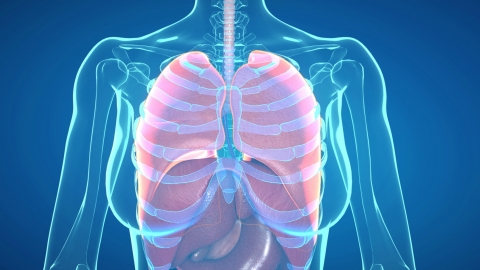What causes white lung?
"White lung" refers to the presence of extensive serous exudates in the lungs, causing the lung tissue to appear white and presenting as large areas of white-like lesions on imaging examinations. White lung may be associated with unhealthy lifestyle habits, inhalation injuries, bacterial infections, viral infections, acute heart failure, and other factors. It is recommended to visit a hospital to identify the underlying cause and follow medical advice for treatment. The analysis is as follows:

1. Unhealthy lifestyle habits: Long-term smoking is a primary factor among unhealthy lifestyle habits that can lead to white lung. Harmful substances in tobacco, such as nicotine and tar, can cause continuous damage to the lungs with long-term exposure, potentially leading to white lung. Immediate smoking cessation is recommended to avoid further lung damage.
2. Inhalation injury: Inhalation of gastric contents, toxic gases, smoke, or other irritants can directly damage lung tissue, triggering chemical inflammation and pulmonary edema. For example, inhaling large amounts of smoke and toxic gases at a fire scene can cause severe lung damage and result in white lung. Immediate removal from the harmful environment causing the inhalation injury is necessary to avoid further exposure. At the same time, it is important to ensure airway patency and promptly clear respiratory secretions and foreign substances.
3. Bacterial infection: Bacterial infection is a common cause of white lung. Bacteria such as Streptococcus pneumoniae and Staphylococcus aureus can multiply extensively in the lungs, releasing toxins that worsen lung inflammation and increase exudation, leading to pulmonary consolidation. Without timely and effective treatment, the condition may deteriorate and result in white lung. It is recommended to promptly follow medical advice and use medications such as potassium penicillin V tablets, cefixime capsules, and amoxicillin capsules to control disease progression.
4. Viral infection: Viruses such as the novel coronavirus and influenza virus can cause widespread and severe damage to the lungs within a short period. White lung caused by viral infection progresses rapidly and may quickly develop into respiratory failure. Patients should follow medical advice and use antiviral drugs such as azvudine tablets, ribavirin granules, and oseltamivir phosphate granules to inhibit viral replication.
5. Acute heart failure: Acute heart failure, associated with excessive fatigue, infections, arrhythmias, and other factors, may also lead to the development of white lung. This occurs because heart failure causes a decline in cardiac pumping function, impeding pulmonary blood return and causing blood congestion in the lungs, which can easily lead to lung infection and white lung, often accompanied by hypoxemia. Oxygen therapy via mask or high-flow humidified oxygen therapy may be provided according to the patient's condition to correct hypoxemia.
At the same time, patients should also actively cooperate with medical treatment, maintain a positive mindset and healthy lifestyle habits to promote recovery.





